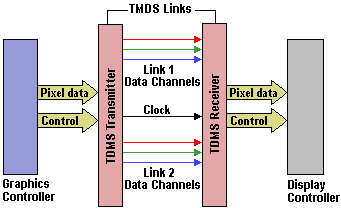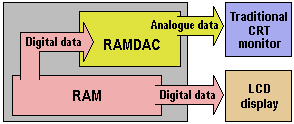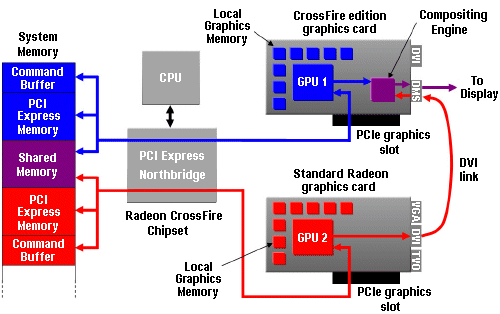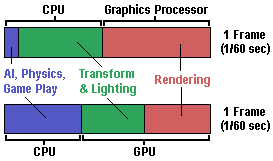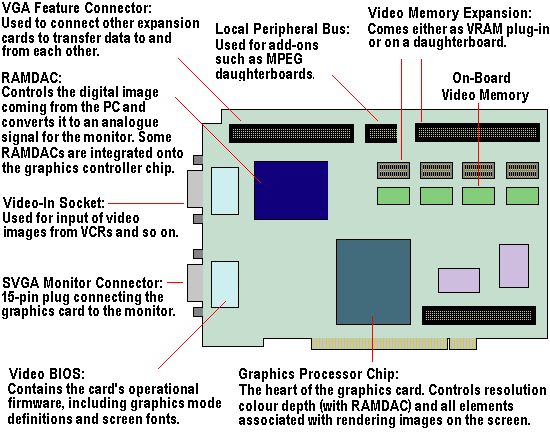Once a widely accepted standard had been established, both graphics card and LCD manufacturers began producing compliant product, with many adapters and displays supporting both the new Digital Visual Interface connector and the traditional VGA interface, … [Read more...]
Digital Graphic Cards
When LCD panels first emerged, they connected to a graphics card via its VGA connector. This, of course, required that the graphics card first to convert the signal to analogue via its RAMDAC. Since LCDs are - unlike CRT … [Read more...]
CrossFire Graphic Cards
Launched at Computex in the summer of 2005, ATI launched their own tandem graphics card solution, branded CrossFire, and comprising the following components: Radeon CrossFire Edition graphics card with Compositing Engine Secondary PCI Express graphics card with … [Read more...]
FSAA Graphic Card Technology
In mid-2000, 3dfx sought to strike back at rival nVidia in the battle for supremacy in the graphics arena with its T-Buffer technology, unveiled on its Voodoo5 range of cards. The T-Buffer allows several key digital effects for improving … [Read more...]
3D Rendering
In the rendering stage, performed by the hardware accelerator, the 3D engine draws the pixels. The bottleneck here is memory access - how fast the pixels read and write to the frame buffer. There are thousands of polygons … [Read more...]
Graphic Card Geometry
In the geometry stage, all 3D images are broken down into polygons. Each polygon is analysed and assigned various characteristics. Objects are defined for their co-ordinates and combined into a single co-ordinate system … [Read more...]
3d Accelerated Graphic Cards
3D computer graphics requires a lot of computer processing power and a large amount of memory, and, until late 1995, 3D acceleration was only found on a small number of high-end products. Its target applications were high-end rendering packages, supporting engines … [Read more...]
Graphic Card Driver Software
A modern graphics card's driver software is vitally important when it comes to performance and features. For most applications, the drivers translate what the application wants to display on the screen into instructions that the graphics … [Read more...]
Graphic Card Memory
The memory that holds the video image is also referred to as the frame buffer and is usually implemented on the graphics card itself. Early systems implemented video memory in standard DRAM. However, this requires … [Read more...]
Graphic Card Components
The modern PC graphics card consists of four main components: the graphics processor the video memory the random access memory digital-to-analogue converter (RAMDAC) the driver software The early VGA systems were slow. The CPU had a heavy workload processing … [Read more...]
